Is there any problem with wiring the output of the two wall warts in series to obtain a 30V output?
As stated by Pentium100 it depends on the kind of PSU (SMPS, Transformer + (linear) regulator, ...) and how they are built internally.
But since I've stumbled over this problem recently I wanted to offer my ...
"How to connect several SMPS in series with some safety features."

simulate this circuit – Schematic created using CircuitLab
I didn't test this circuit as shown. So far I've only combined an earthed 20V 4,5A laptop SMPS with a floating 32V 2A printer SMPS to supply ~51V (max 1,5A) to a PoE network switch. This didn't work until I put a diode between the two PSUs, presumably because at power-on the PoE switch behaved like a short circuit and the laptop PSU's protection kicked in with -32V across its terminals (see linked questions below). I'm not exactly sure why the diode helped but it did.
Some Notes:
- At maximum one of the PSUs may be grounded/earthed. Otherwise the PSUs would short circuit each other.
- The relays ensure that the output voltage is only switched on if and when all single PSUs are working.
- The LED next to RLY1 is just an idea of an indicator light which shows this PSU to be working.
- The potentiometer connected to RLY2 is supposed to work as a voltage divider to keep the relay from switching on to early while the PSU is still ramping up.
- one could even ad circuity to only allow the relays to engage in an individual voltage range for each PSU.
- The final output voltage is $$ U(out) = V_0 + V_1 + ... + V_n - x*0,6V $$ with x being the number of diodes in the current path (don't count the relay diodes).
- The maximum current is limited by the PSU with the lowest current capacity.
Id like to post this answer here "Connecting switch-mode power supplies in series to increase voltage" but that one is locked and the other possible questions fit even less:
